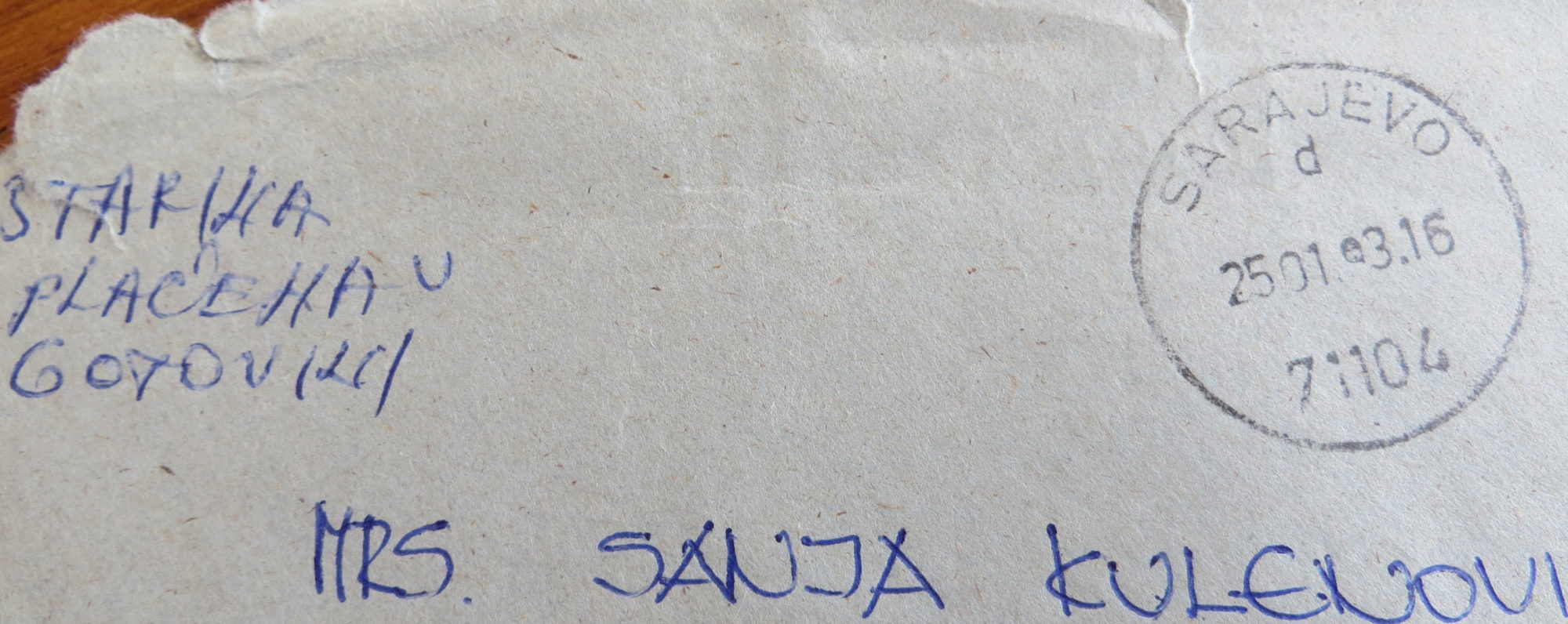From: The Guardian; by Justin McGuirk

The Historical Museum in Sarajevo has seen better days. It may occupy the city’s finest modernist building, but the marble facade remains bullet-raked and the steps are crumbling. It only gets worse inside. In the main gallery, the ceiling is missing, the lights are off and so is the heating. It’s so cold that I can see my own breath and there’s a patch of ice on the floor where the roof has leaked. I am the only visitor. “People don’t come here any more,” says Amar Karabus, one of the curators. “They’re not interested.”
The reason locals are not interested is that they would rather forget about the objects inside. The collection breezes over the thousand-year history of Sarajevo to concentrate on its four most notorious years: 1992-95. The exhibits tell the story of what daily life was like during the siege of the city. While those memories are still too raw for this show to be popular, the objects attest to the citizens’ bottomless ingenuity and represent a design culture that has nothing to do with leisure, technological progress or social mobility but, rather, survival.

Almost everything here is homemade, cleverly cobbled together out of whatever was to hand. For that reason, some of the most unlikely items are the guns used by the fledgling Bosnian defence forces. They have none of the ruthless precision of the military-industrial complex. Instead, they’re made of gas and plumbing pipes welded together and fixed to hand-carved shoulder stocks. Most of them don’t even have triggers, but require you to pull back a bolt and release it like a slingshot to detonate a 9mm shotgun cartridge – also homemade. Wielded by a civilian army wearing uniforms cut from blankets and tarpaulins, they’re lethal toys, really, almost as much to the firer as to the firee.
More than the weaponry, however, it is the household items that best evoke the resourcefulness required to survive 1,435 days without electricity, gas or running water. The nucleus of the home was a “drum” stove for heating and cooking, which people fashioned out of upturned pots or oil cans. With their grates for doors, they recall the helmets of those other pragmatic heroes, Don Quixote and Ned Kelly. The flues were inserted through a window or a hole in the wall, to draw out the smoke from whatever fuel families could lay their hands on – when wood ran out, books would have to do.

After the fact, some of the objects take on a playful character. Water, for instance, had to be collected from public faucets, which meant designing trolleys for lugging it home. One of these is made from a beer crate and roller skates. There’s also a rather beautiful watering can cut and welded from a USAid oil tin. Surely gardening wasn’t a top priority, I thought, until I discovered that it was, with every available space turned into allotments for growing vegetables. Almost entirely reliant on sparse humanitarian aid rations – tinned beef and mackerel were the real luxuries – Sarajevans had to improvise their own “war recipes”, from grass pie to fake gorgonzola.
Many of the objects have a disarming charm. There’s a vacuum flask made from a glass bottle coated with insulating foam and enclosed in a cardboard box wrapped in bright orange packing tape marked “fragile”. It’s about as un-Thermos-like as you can get, which is why discovering its use as one is such a delight. One of the most inventive devices here is a torch crafted out of a bicycle lamp and a miniature dynamo. To power it, you crank a handle from a coffee or meat grinder. Let’s avoid the temptation to present this as an authentic design culture of Sarajevo, which for hundreds of years was one of Europe’s most diverse and tolerant cities. It is far from that. Instead, it is the design culture of an aberration, a temporary phenomenon within a historical blip. We are used to praising this kind of ad hoc ingenuity – often rather patronisingly – when we see it in Africa or India, but this was Europe, less than 20 years ago, and these people were not poor. Their money was simply no use to them, just as a Mercedes in a garage is no good without petrol to run it. The rote responses we apply to the developing world don’t work in this instance.
Each object here is an honest witness to a tough existence, and yet they are impartial – they tell their stories without blame or politics. It’s not that Sarajevans want to forget what happened to them, but that it is still too soon to be reminded, and they want to move on. None of the locals I spoke to are proud of these objects. But when the time comes, surely it will be hard for them not to look back and marvel at the things their city made.

Below link will take you to an interesting project “Sarajevo Survival Tools”, done in cooperation of University of Sarajevo and Historical Museum.
